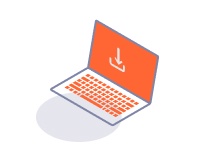ProfessionalCommunity Edition
Customizing Burp's tables
-
Last updated: December 16, 2025
-
Read time: 2 Minutes
You can customize the layout of many of the tables in Burp and work directly with their data. This enables you to focus on the information that matters to you. Burp remembers your preferences, so you don't need to reorganize your tables every time you start Burp.
Where applicable, you can:
Hide columns - Right-click the column header, then select Hide column.
Show hidden columns - Click the options menu > Table layout, then select the columns you want to display.
Move columns - Drag and drop the column header to a new location.
Sort the table - Click a column header to sort. Each click cycles through ascending, descending, and unsorted.
Filter the data - Click the Filter settings bar and set criteria. Some tools let you create advanced custom filters using scripts. For more information, see Bambdas.
Copy column data - Right-click the column header, then select Copy column to copy its data to your clipboard.
Restore the default layout - To return the table to its original state, click the options menu > Table layout, then select Restore default table.
Customizing tables with scripts
Some Burp tools have Bambda functionality, enabling you to write and run scripts that customize tables in more advanced ways. This includes:
Advanced filtering - Click the Filter settings bar, then go to Script mode to create your own powerful custom filters.
Adding custom columns - Click the options menu > Add custom column to create a personalized column that displays the data you want to see.


